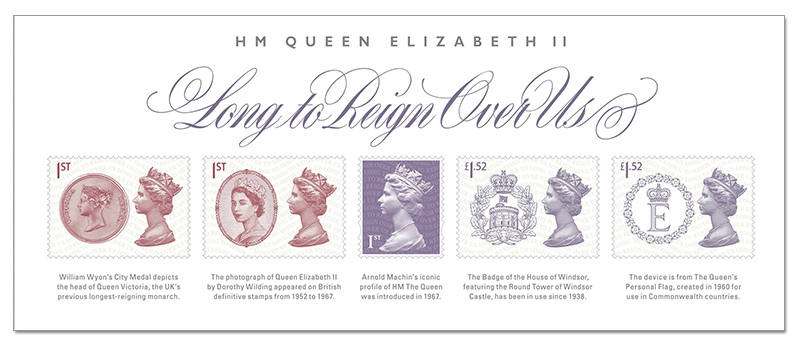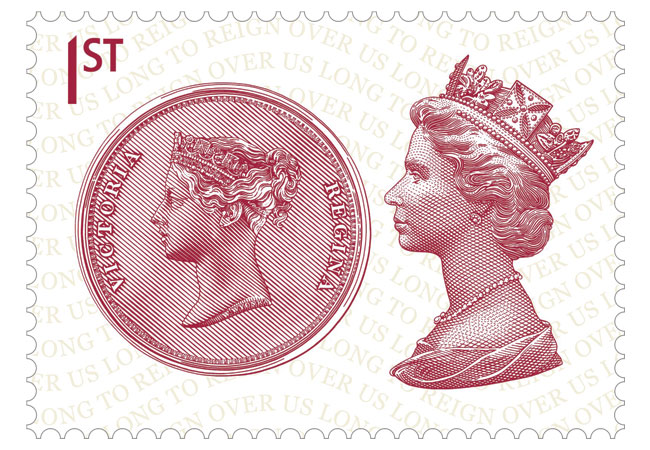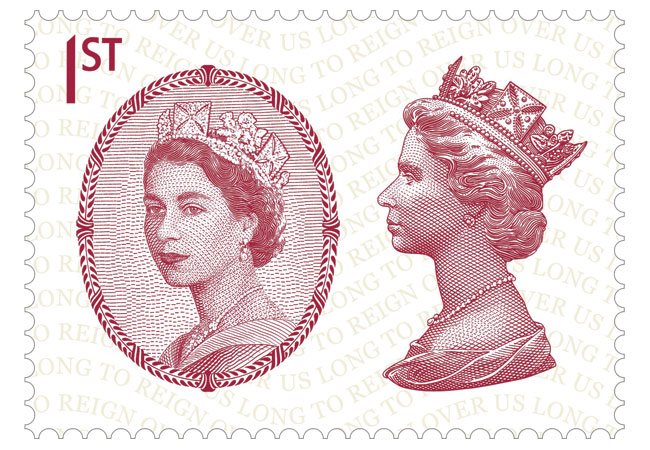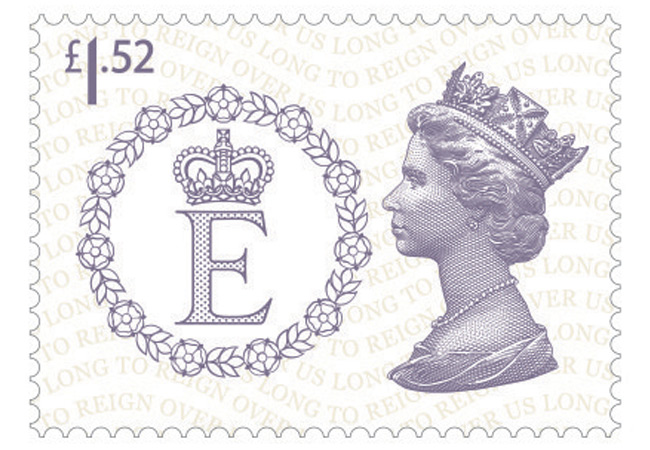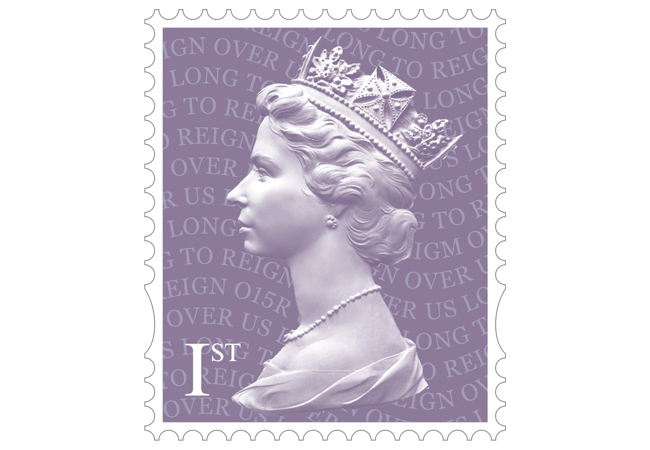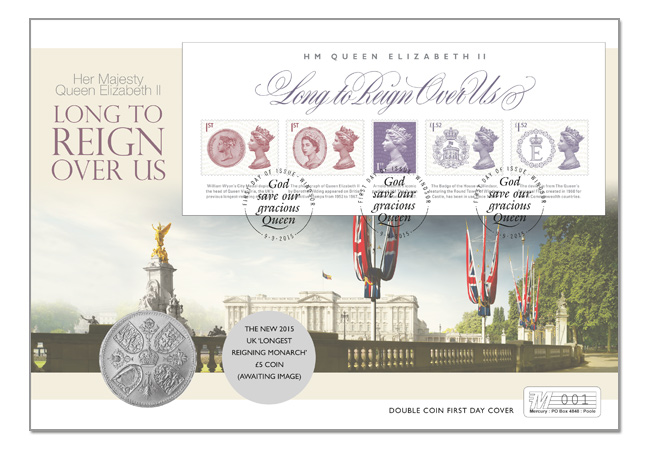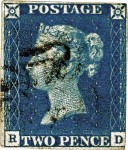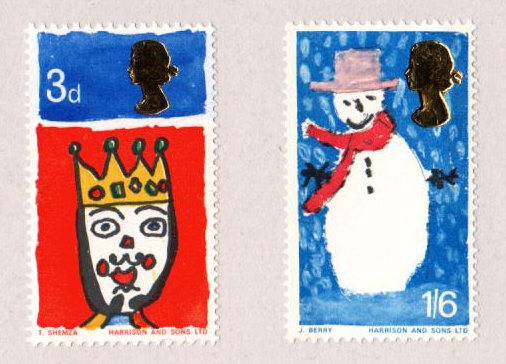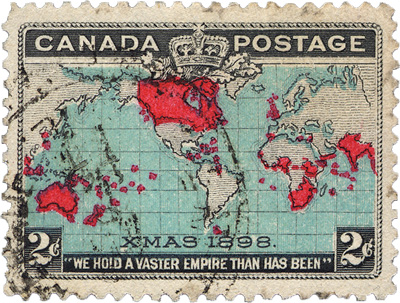Information
First Look: The UK’s New Longest Reigning Monarch Stamps
Royal Mail has issued a set of five new stamps marking Her Majesty Queen Elizabeth II becoming our Longest Reigning Monarch.
Each stamp features a different regal design highlighting a key Royal motif, and there is a new 1st Class definitive for use on everyday letters too.
I’ve managed to get hold of some of the stamps fresh off the press so I can show them to you here on the blog…
1st Class
In a nod to the historical precedent for the occasion this stamp features William Wyon’s ‘City Medal’. Depicting the head of Queen Victoria – the UK’s previous longest reigning monarch – the medal was struck to commemorate her first visit to London. The image on the Penny Black was based on this portrait, which in turn was based on a sketch of Princess Victoria when she was 15 years old.
1st Class
Dorothy Wilding’s three-quarter profile photograph of Queen Elizabeth II was one of a series taken in April 1952 and appeared on British postage stamps from 1952 until 1967.
It is reprised here, an unprecedented pairing of the two most important images of the Queen in British postal history.
£1.52
The House of Windsor came into being in 1917, when ‘Windsor’ was adopted as the British Royal Family’s official name by a proclamation of King George V, replacing the historic name of Saxe-Coburg-Gotha. The Badge of the House of Windsor shown on this stamp – featuring the Round Tower of Windsor – has been in use since 1938.
£1.52
The second high-value stamp bears the Personal Flag of Queen Elizabeth II. This is a standard that can be used on any building, ship, car or aircraft in which the Queen is staying or travelling. It is often used to represent her role as Head of the Commonwealth.
1st Class Definitive
In 1966 the HM The Queen approved Arnold Machin’s design for an effigy of her to be used on what came to be known as the “Machin series” of British definitive postage stamps. This latest edition is printed in a new mauve colour and the text in iridescent ink repeats the phrase, ‘Long to Reign Over Us.’
There is also a new commemorative postmark featuring the opening lines from the national anthem – ‘God Save Our Gracious Queen’ – which complements the stamps superbly. Any commemoratives using this postmark are sure to be sought after in the future – it is a true one-of-a-kind.
Suffice to say, these five new stamps are an intelligent, subtle and dignified tribute to Her Majesty Queen Elizabeth II’s remarkable reign. As it is extremely unlikely her record will be broken in our lifetime, these could well become some of the most sought after QEII stamps ever issued.
You can own all five of these stamps now, postmarked with the first day of issue date 9/9/2015, and affixed to a commemorative Double Coin Cover. Featuring the new UK £5 Coin, you can read more about it by clicking here…
The Penny Black – the world’s first and most famous stamp
The world’s first postage stamp, the Penny Black, officially turns 175 on 6th May 2015. Today, stamps are one of those everyday things which we take so much for granted that it’s impossible to visualise a world without them; but 175 years ago sending and receiving letters was a major operation, and a relatively expensive one.
Letters were charged according to the distance travelled and the number of sheets. To send a letter from London to Glasgow cost 18 pence – a couple of days’ wages for the average man – and it was the recipient who paid, not the sender!
In 1837 Rowland Hill led the campaign for Uniform Penny Postage, arguing that the main cost of the postal service was the cumbersome method of computing postage. A flat rate of a penny, paid by the sender, would slash costs dramatically – but to achieve this he had to devise a method of prepaying postage.
His answer was the introduction of prepaid stationery and also a label just large enough to bear the stamp and smeared on the back with a glutinous wash – this label would eventually become the Penny Black.
The Treasury organised a design contest for the new adhesive stamps but none of the submissions were considered suitable. Although he was not one of the prize-winners, Sir George Mackenzie came closest to what was eventually used for the stamp – an upright oblong with a portrait of Queen Victoria, with POSTAGE at the top and the value at the foot. The portrait was drawn by Henry Corbould from an effigy of Victoria when she was only 15.
On 6th May 1840, the Penny Black went into official use, followed two days later by the Twopenny Blue. Although a huge success, these stamps had a flaw and within weeks of their introduction, Rowland Hill’s worst fears were realised when it was found the general public had found ways of washing off the postmarks from the stamps and reusing them.
Immediately he set about a way to combat the problem in a series of experiments which has become known as the Rainbow Trials. As a result of the trials, less than a year after they were issued, it was decided to replace the Penny Black with the Penny Red and the Twopenny Blue would be reissued with added security measures.
Despite its short life, the legacy of the Penny Black still lives on today, 175 years after it was first issued. Its place as the world’s first postage makes it a must have for any collector. Click here to see our range of available Penny Black related products.
Who issued the world’s first Christmas Stamp?
Did you know that since Royal Mail issued their first Christmas stamp in 1966, over 17 billion Christmas stamps have been printed in Britain? But as popular as they are today, Great Britain was late to the table when it came to issuing Christmas stamps. So which country can lay claim to issuing the first Christmas stamp?
The Contenders…
Canada – 1898
The first country to lay claim is Canada, which produced a stamp bearing the words ‘Xmas 1898’. But many people question whether this was really a Christmas stamp at all…
Denmark – 1904
Denmark claims it printed the first Christmas stamp in 1904 after an idea from postmaster, Einar Holboell, to add an extra stamp to the Christmas mail and the money go to help sick children. However these “stamps” were actually labels and not issued for postage.
Austria – 1937
Austria issued two stamps on 12th December 1937 for use on Christmas mail and New Year greeting cards.
Hungary – 1943
Finally, there is Hungary. Many people think the 1943 Hungarian stamps to be the first real Christmas stamps as they feature religious imagery.
The secret behind the Canadian stamp
It is fair to say however that the issue of the Canadian Christmas stamp did not really have much to do with Christmas. In fact it was a result of then Canadian Postmaster General William Mulock lobbying to standardise postage rates across the Empire at one penny.
After failing to get the new rules introduced at the 1897 Universal Postal Union, Mulock returned the following year more determined than ever, with a new proposal. This time he succeeded, and in July 1898, the Imperial Penny Postage rate was unveiled. Canada made the move to be effective on Christmas day 1898.
As a result, the stamp was officially released on 7th December 1898 bearing Mercator’s famous map with the British Empire highlighted in red, and also the words “XMAS 1898”.
So who can lay claim to issuing the first Christmas stamp?
Well despite the controversy, to me, there is only one winner – and that is Canada. Whether it was issued specifically for Christmas or not, it bears the words ‘Xmas 1898‘ and therefore I think it rightly deserves the title of first Christmas stamp.

